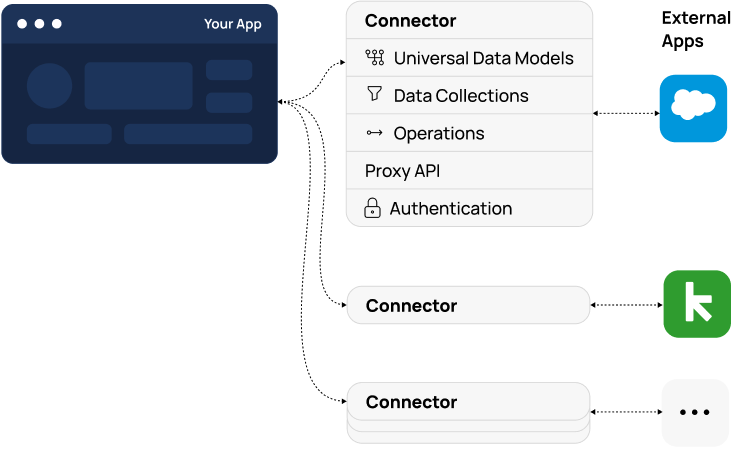Connector Builder
Connector Builder lets you modify public connectors or create new ones from scratch.
Each connector is just a set of YAML and JavaScript files transforming the underlying API into a consistent format.

Connector Spec
Connector specification provides top-level definition of the connector and contains information such as connector name, logo, parameters, etc.
Full article: Connector Spec.
Authentication
Every connector must have authentication configured.
It specifies how the user interface for connecting the external application looks, how to get API credentials, and how to access the API using the credentials.
Full article: Authentication
API Specification
API specification describes possible requests and responses that the API supports.
You can find and upload an existing API specification or generate one from the API documentation using built-in AI.
Having API specification as a part of a connector allows you to configure API requests and responses with an easy-to-use UI—both in connector builder and as a part of building an integration.
You can make API calls without API specification, but you will have to configure them manually, which is less straightforward.
Full article: API Specification
API Operations
API Operations are automatically generated from the API specification whenever possible. You can add more operations manually.
Full article: API Operations
Events
Events let you react to changes in the external application.
Full article: Events
Data Collections
Data Collections let you read and write data from the external application in a consistent way.
Full article: Data Collections
Global webhooks
Global webhooks let you handle webhooks that are configured on the OAuth application level rather than individually for each customer/connection.
Full article: Global Webhooks
Testing
After configuring authentication, you will be able to test the connector right from the connector builder.
To do this, create a test integration and then a connection.
This integration and connection are linked to your workspace. This will allow you to run any of your integrations with a connector you build right away.
Versioning
When a new version of a connector is released to the library, you can update your connector to the latest version using the "Update" button on the connector page.
When you implement a new version of the custom connector, you can publish it and update any integrations using this connector.
Updated about 1 month ago
